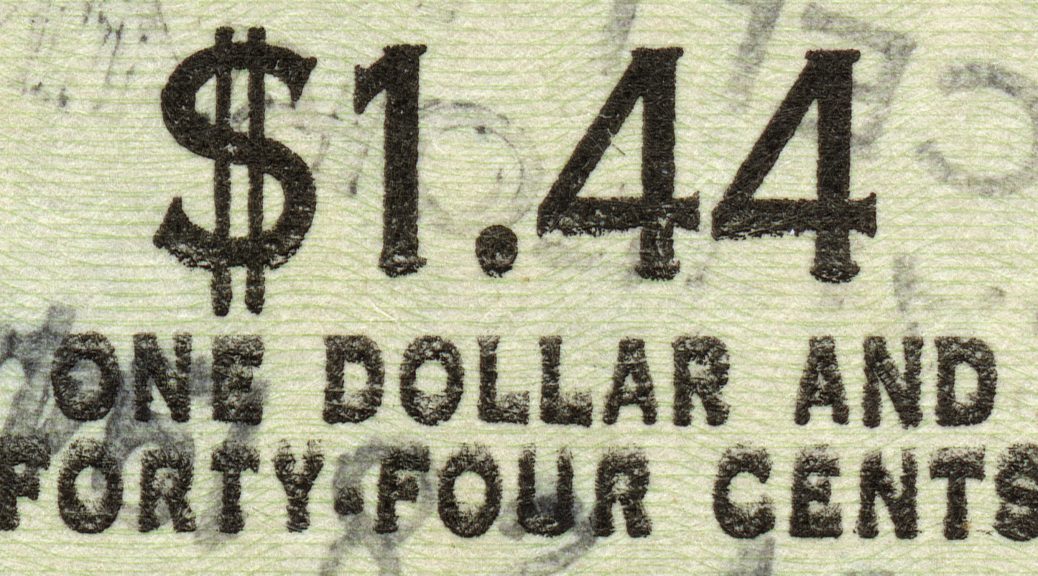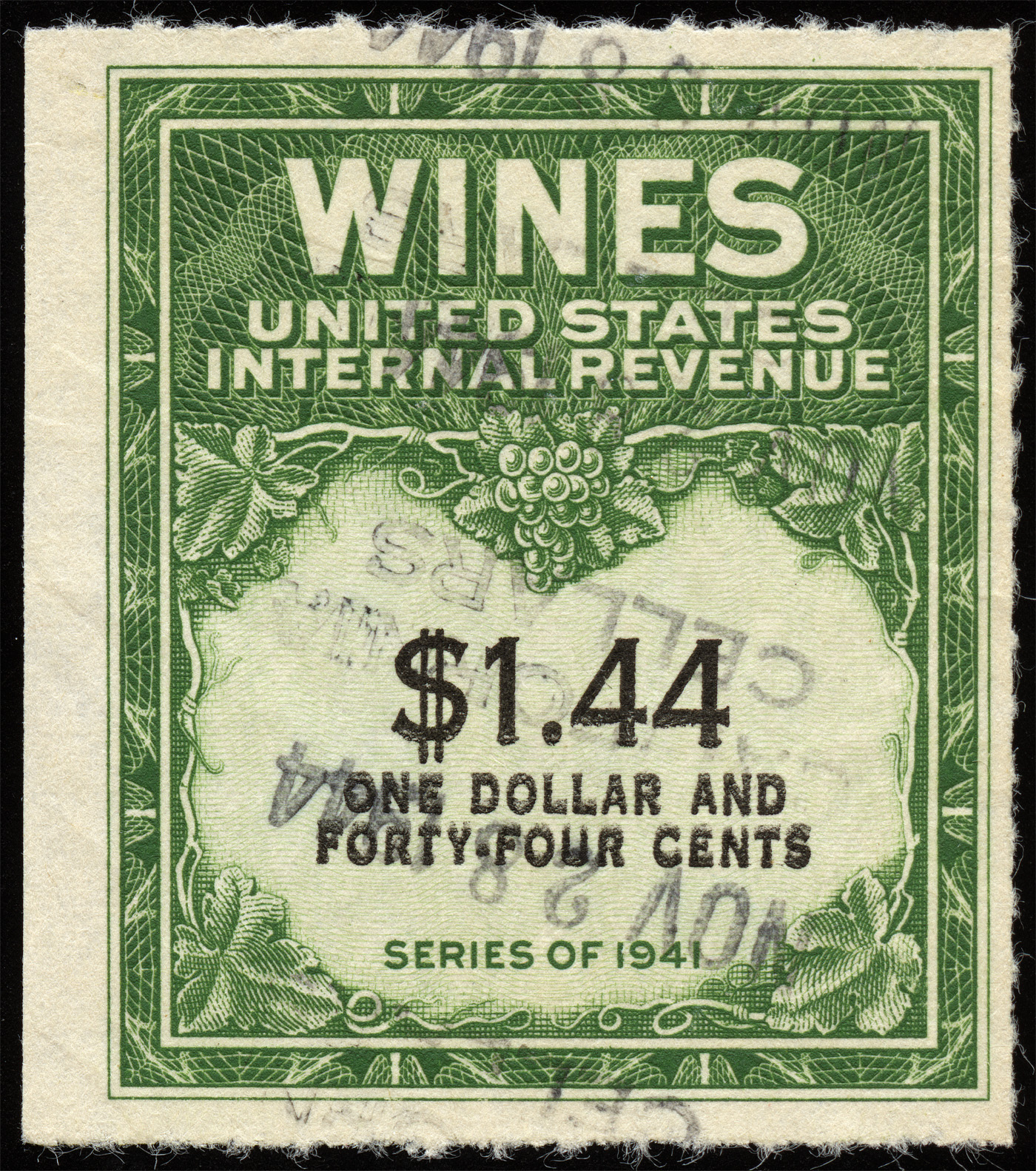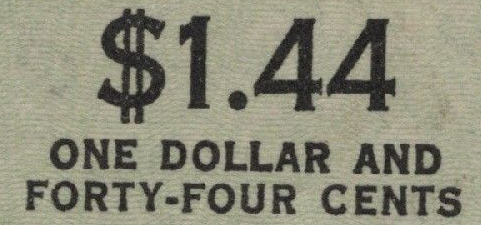
Interesting Doubling on Text of Scott # Re147 Wine Stamp
I asked several collectors’ opinions via email and got a variety of responses, but no clear consensus.
My original query:
Good evening,
How were the black elements in type RE7 (large size type of 1942) printed? I assume the large denomination was printed on the same pass as the small lettering, correct?
It seems to me that the attached RE147 (2 images, one being a closeup of the black elements) is somewhat unusual. It exhibits clear doubling of the small type, but absolutely none on the central $1.44. If this were a simple kiss print, given how adjacent the elements are to one another, I would expect at least a portion of the $1.44 to exhibit doubling as well.
What exactly caused this?
Link to high-resolution closeup image.
The responses I received were as follows.
Bart Rosenberg:
These were printed by electrotype from typeset forms. This kind of impression is not scarce, if you spent some time collecting and studying this issue you would find a fair number of similar prints. The Series of 1941 Wine Stamps by Bidwell is a very good and inexpensive paper book on the issue. $6 from Eric and well worth it.
Richard Friedberg:
I think the black denominations were printed just like Bureau precancels and the final issue of postage due stamps. From your close up scan, it appears that only the third line is slightly doubled. I don’t know exactly how these were printed, but based on what you have I would say there were three lines of type and the third one on your stamp, as perhaps others on the sheet, was very slightly loose, which resulted in the slight doubling.
Since the overprinted denomination was not engraved from a die and transferred to a plate, it’s hard to call this a DT, but it is a doubled variety. Not sure what it would be worth, but in my mind a very modest premium item. Worth a brief write-up in TAR asking for information from folks who know more about how these were printed than I do.
From Dave Nussman:
I am no exert in this area, BUT
It clearly looks like a kiss printing to me, as Dan’s statement implies he feels. I have seen other cases in which the doubling in a kiss print does not extend to all of the print. Presumably the printing plate had enough ink remaining to form the second image only over a portion of its surface. The very fact that the second image is much lighter throughout makes that possible.
From Tom Harpole:
…Anyway, this one has me stumped. Why the lettering shows ghosting and the numerals don’t doesn’t make sense; however, you will also notice the bottoms of the numerals show signs of some extraneous ink. I looked through several copies and almost all other copies show a clean impression on the numbers and letters:
Notice how the bottom of the $1.44 is clean and sharp. Then notice how the bottom of the $1.44 on Dan’s copy is ragged with extraneous ink.
The only plausible explanation I can come up with is that this is a very early sheet off the press that was only partially inked up.
There was some ink on the wording and no or very little ink on the $1.44.
The sheet was then fed through the press a second time.
My response to Tom:
Thank you for the reply. Re “The sheet was then fed through the press a second time.” That then would make it a true double impression, correct? (As opposed to a kiss impression).
His reply:
In a strictly technical sense, yes, then that would be a double impression. I still can’t explain the absence of ink around the numbers though. Most of the time when a job is getting set up for printing, especially in the letterpress industry, after the initial setup is done the pressman would take a rag and some press wash and wipe the plate clean. Perhaps this is what happened and the plate wasn’t totally cleaned before printing was started.
From Jim Drummond:
Looks to me like the paper was slightly pulled while it was still in contact with the printing plate, or, more accurately, before the contact (impression) had been fully released.
I see slight smearing, rather than two discrete impressions.
There’s more smearing in one area over another, depending on how hard it was pulled and in which direction.
From Eric Jackson:
I believe this to be a kiss print, basically a freak of the printing process. A double impression would show consistent doubling throughout the black print, not just a portion of it.
Any other theories or corroborations?

